Onion
Embedded Linux Boards
Home Automation
Onion
Embedded Linux Boards
Home Automation
The Omega2 Pro is the next generation of our highly successful Omega2 and the most powerful IoT computer we’ve made yet. It is a standalone device — the processor, memory, gigabytes of storage, and Wi-Fi are all built-in, and it’s smaller than a breadboard.
The storage is pre-loaded with the OpenWrt embedded Linux distro, so getting started is as easy as plugging in a Micro USB cable for power and taking a few minutes to go through the browser-based setup wizard.
Since we first launched the original Omega in 2015, and later the Omega2, we’ve shipped tens of thousands of boards and listened carefully to the feedback from our users. The result is the Omega2 Pro, the latest iteration on our vision for an ideal IoT computer:
To get started, you only need the Omega2 Pro itself, a regular Micro USB cable, and your computer - no keyboards, monitors, or anything else. Take a few minutes to step through the browser-based setup wizard and you’re up and running.
Develop your project in your favorite language: Python, GoLang, NodeJS, PHP, C, C++, and many more are supported. There’s also a wealth of existing packages available so you don’t have to start from scratch.
When it’s time to show off your project, you can demo with confidence knowing any computer or wall charger can serve as a power source and you can make last-minute changes from any computer with a browser.
A common theme we heard from our users of previous Omega iterations was that they felt constrained by storage space. The gigabytes of storage on the Omega2 Pro will allow you to build rich, modern applications, with plenty of space to hold libraries, assets, media, and more.
| A. 30-pin expansion header | G. USB host |
| B. Battery connector | H. USB-to-serial |
| C. 8 GB eMMC | I. Full-color LED |
| D. Programmable button | J. Omega2 core |
| E. Power management | K. Chip antenna |
| F. Micro USB (power & serial) |
IoT is all about connectivity, and the Omega2 Pro specializes in Wi-Fi networking. The Wi-Fi interface can simultaneously host its own Wi-Fi access point and connect to existing Wi-Fi networks.
The addition of an Ethernet expansion board brings the Omega2 Pro into the world of wired networking as well.
An on-board battery management chip makes the Omega2 Pro compatible with LiPo batteries: they can be used as the main power source, and will be charged when the Omega is connected to USB power. Use a battery to make your project portable, or to act as a back-up power supply.
The on-board USB-to-serial chip provides reliable, always-on access to the Omega’s commandline, which is invaluable for debugging. Alternatively, securely connect to the commandline through the local network using SSH.
Along with the system status and Wi-Fi status LEDs, there is a full-color LED driven by a hardware pulse width modulation (PWM) controller, so animations and transitions are always smooth.
With extensive I/O, Omega2 Pro makes it easy to interface with other devices and components.
On top of that, it’s compatible with the existing ecosystem of plug-and-play Omega2 expansions to add functionality.
Above expansions: NFC/RFID, ADC, GPS, OLED
Above expansions: Servo (PWM), Ethernet, Relay, Proto
| Expansion | Description |
|---|---|
| NFC/RFID | Standard 13.56 MHz RFID and NFC reader and writer |
| ADC | Four-channel, 16-bit analog to digital converter |
| **GPS*** | Latitude and longitude from GPS satellites using the U-Blox NEO-6M module |
| OLED Screen | Low-power, 0.96" diagonal, monochrome display with 128 x 64 pixels |
| Servo (PWM) | Generate up to 16 different, free-running pulse-width-modulated signals |
| **Relay*** | Two electromechanical relays for switching higher-power circuits up to 60 W |
| Ethernet | Wired 10/100 network connectivity via a standard Ethernet cable |
| Proto | A blank slate of 185 pads on which to solder your own circuit |
Since the campaign has ended, we have discontinued the Relay Expansion & GPS Expansion. Collections that include these boards will continue to ship from Crowd Supply while they are in stock, but once they are sold out they will not be replenished. You can read our announcement about this decision on our Onion site.
Hosted directly on the Omega2 Pro itself, OnionOS provides an intuitive user interface through your browser. Write code, run commands, and use apps to interact with your Omega2 Pro, no installation required.
OnionOS is based on Linux, so it supports modern programming languages, such as Python, GoLang, NodeJS, PHP, C, and C++, and you can leverage a huge number of existing software packages so you don’t have to build everything from scratch.
The Terminal and Code Editor apps make OnionOS a development environment that works on any computer. With the OnionOS App Manager, you can install more OnionOS apps and do even more from your browser.
Follow our Omega2 Pro getting started guide when you receive your Omega2 Pro and you’ll have all the tools needed to build a great project in no time.
If you’re looking for more details about the hardware, check out the Omega2 Pro hardware overview in our documentation.
This project builds on the success of our community, which is years in the making and thousands strong. They have contributed an enormous amount of examples, user cases, demos, questions, answers, and tutorials.
We’ve been iterating on the Omega IoT computer since 2015. You’ll see the improvements we’ve made with the Omega2 Pro:
| Omega2 Pro | Omega2+ on Expansion Dock | Omega2 on Power Dock 2 | |
|---|---|---|---|
| Processor | 580 MHz MIPS | 580 MHz MIPS | 580 MHz MIPS |
| Memory | 512 MB | 128 MB | 64 MB |
| Storage | 8 GB | 32 MB | 16 MB |
| Wi-Fi | 2.4 GHz b/g/n Access Point & Client | 2.4 GHz b/g/n Access Point & Client | 2.4 GHz b/g/n Access Point & Client |
| Battery Management | LiPo (use and charge) | None | LiPo (use and charge) |
| USB Serial | Yes | Yes | No |
| USB 2.0 Host | Yes, one | Yes, one | Yes, one |
| Power Requirements | 5 V, 500 mA USB | 5 V, 500 mA USB | 5 V, 500 mA USB |
Think of the Omega2 Pro as an Omega2+ built into a Dock that combines the Expansion Dock, Power Dock 2, and 8 GB of storage. It features all of the functionality that our community has come to love from different products of our existing line, but combined into a single, standalone device.
While the Omega2 Pro is in its own category as an IoT computer, it still stacks up pretty well against general-purpose single-board computers:
| Omega2 Pro | Raspberry Pi 3 B+ | Beaglebone Black Wireless | |
|---|---|---|---|
| Processor | 580 MHz MIPS | 1.4 GHz Cortex-A52 | 1 GHz Cortex-A8 |
| Memory | 512 MB | 1 GB | 512 MB |
| Storage | 8 GB eMMC | None - microSD | 4 GB eMMC |
| Wi-Fi | 2.4 GHz b/g/n access point & client | 2.4 GHz b/g/n client | 2.4 GHz b/g/n client |
| Battery Management | LiPo (use and charge) | None | None |
| USB Serial | Yes | No | No |
| Power Requirements | 5 V 0.5 A | 5 V 2.5 A | 5 V 0.5 A |
| Open Source | Yes | No | Yes |
| Path to Production | Yes | No | Yes |
Every Omega2 Pro unit is manufactured in Shenzhen, China by a contract manufacturer (CM). We’ve been working with the CM since 2016 and have successfully produced tens of thousands of boards. Here’s how the process works.
To start, a sub-contractor printed circuit board (PCB) producer will fabricate the Omega2 Pro PCBs. This will be the longest part of manufacturing, taking about three weeks from start to finish. Once completed, the PCBs will be delivered to our CM who will inspect and electrically test all traces. In the meantime, our manufacturing team and the CM’s purchasing department will have amassed all of the discrete components required to build the Omega2 Pro.
Using a pick and place machine, all of the components will be placed on the PCBs. The PCBs will then be passed through a reflow oven to permanently attach the components. Visual inspection using an AOI (Automated Optical Inspection) machine is then done to make sure all components have been properly oriented and properly attached. The boards can then be called a PCBA (Assembled Printed Circuit Board).
Production samples of Omega2 Pro coming off the assembly line
We then move on to the most crucial task: testing! First up is basic electrical testing. After that, each unit will have a turn in the testing rig that connects to all of the I/Os.
The first test is what we call a "sanity test": we’ll boot the device make sure the current draw is a normal value (anything otherwise would suggest a manufacturing defect) and that the device successfully boots into the bootloader (code that runs before the operating system — think of it like the Omega’s BIOS). Using the bootloader, we’ll test the operation of all of the GPIOs and confirm the network adapter’s MAC address. The device will then be rebooted into the Linux operating system to run self-test programs that ensure the correct firmware is installed, the eMMC storage can be detected and accessed, USB devices can be detected, and the Wi-Fi radio is properly calibrated for maximum range and data integrity.
The final test is to check that the device’s Wi-Fi access point is active and can be detected by other devices, and the access point name matches the MAC address of the device.
Units that don’t pass a step in this gauntlet of tests are marked and later inspected to find the root cause of the failure and improve the manufacturing process for the next run.
All available Omega2 Pro products are shipped by Crowd Supply’s fulfillment partner, so parcels will be shipped to backers from their warehouse in the USA. Delivery within the US is free. Delivery outside the US will incur a surcharge during checkout. For more information, please see Crowd Supply’s guide on ordering, paying, and shipping.
"As with the Omega2 and Omega2 Plus, the Pro will be able to take advantage of the OnionOS — a web-based GUI interface that hosts a number of apps that can be used to configure and control the board."
"[Onion Omega2 Pro offers] a self-contained platform with the processor, memory, storage, and Wi-Fi radio baked into a single board."
"Se trata de un dispositivo autónomo con procesador, memoria, gigabytes de almacenamiento y Wi-Fi en un formato más compacto que una breadboard."
"A new tiny wireless Linux plug and play development board has been created by Onion."
"Following on the success of the Omega2 and Omega2 Plus, Onion is back with a third installment in their Omega line — the Omega2 Pro."
"Unlike the previous version, this is a far more functional system with a 30-pin expansion header, support for battery charging, a micro USB for charging and serial, and a USB host port."
"Außerdem funktioniert der Omega 2 Pro als Einplatinenrechner Out-of-the-box, statt wie bisher eine Kombination aus Basismodul und speziellem Dock zu erfordern."
"Out of the box it supports Python, Golang, Node.js, PHP, C, C++, you know, everything, all the languages you'd probably want to use... quite a nice little board."
Produced by Onion in Boston, MA.
Sold and shipped by Crowd Supply.
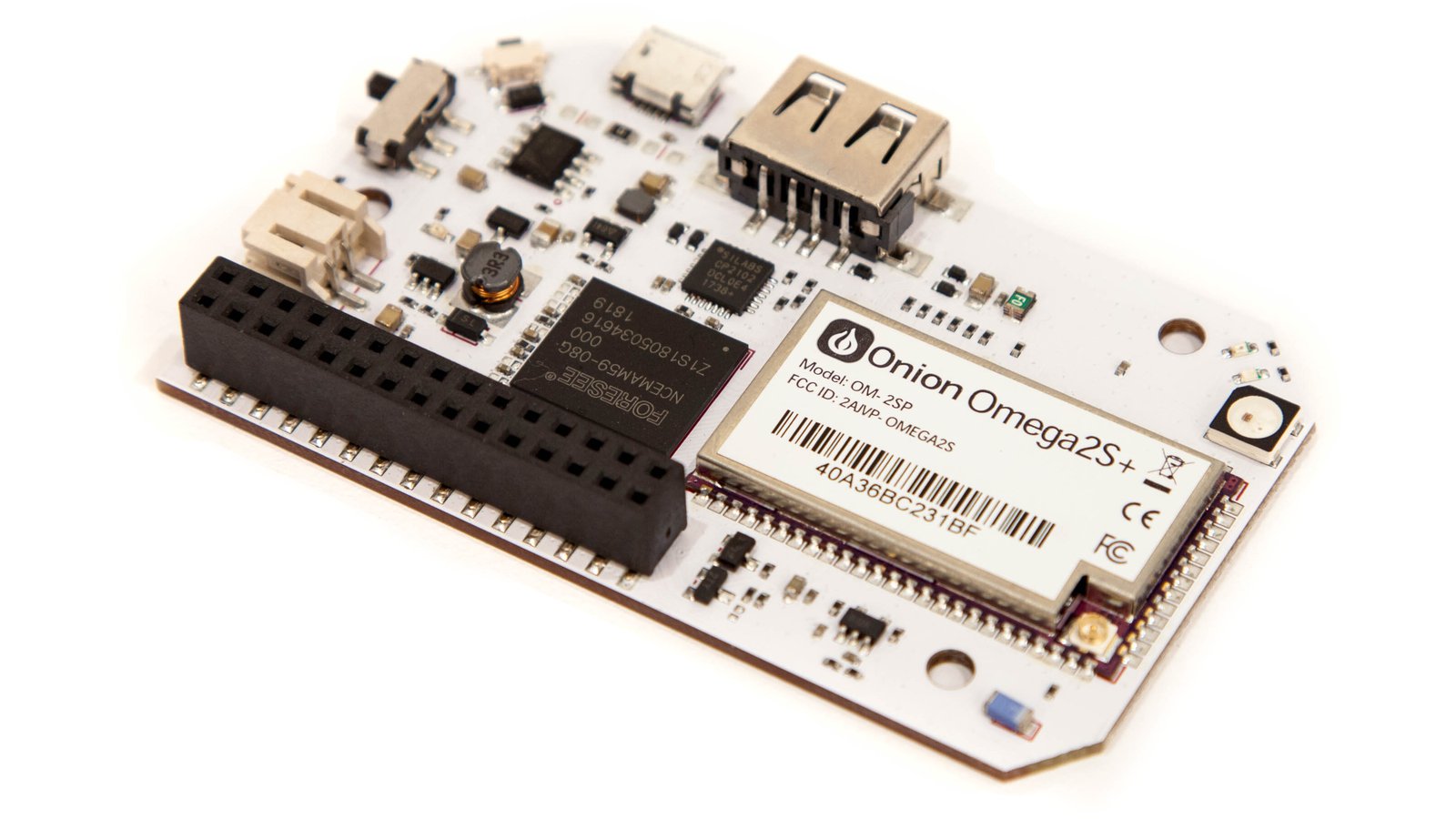
An Omega2 Pro IoT Computer so you can get a head start on your projects in the new year!
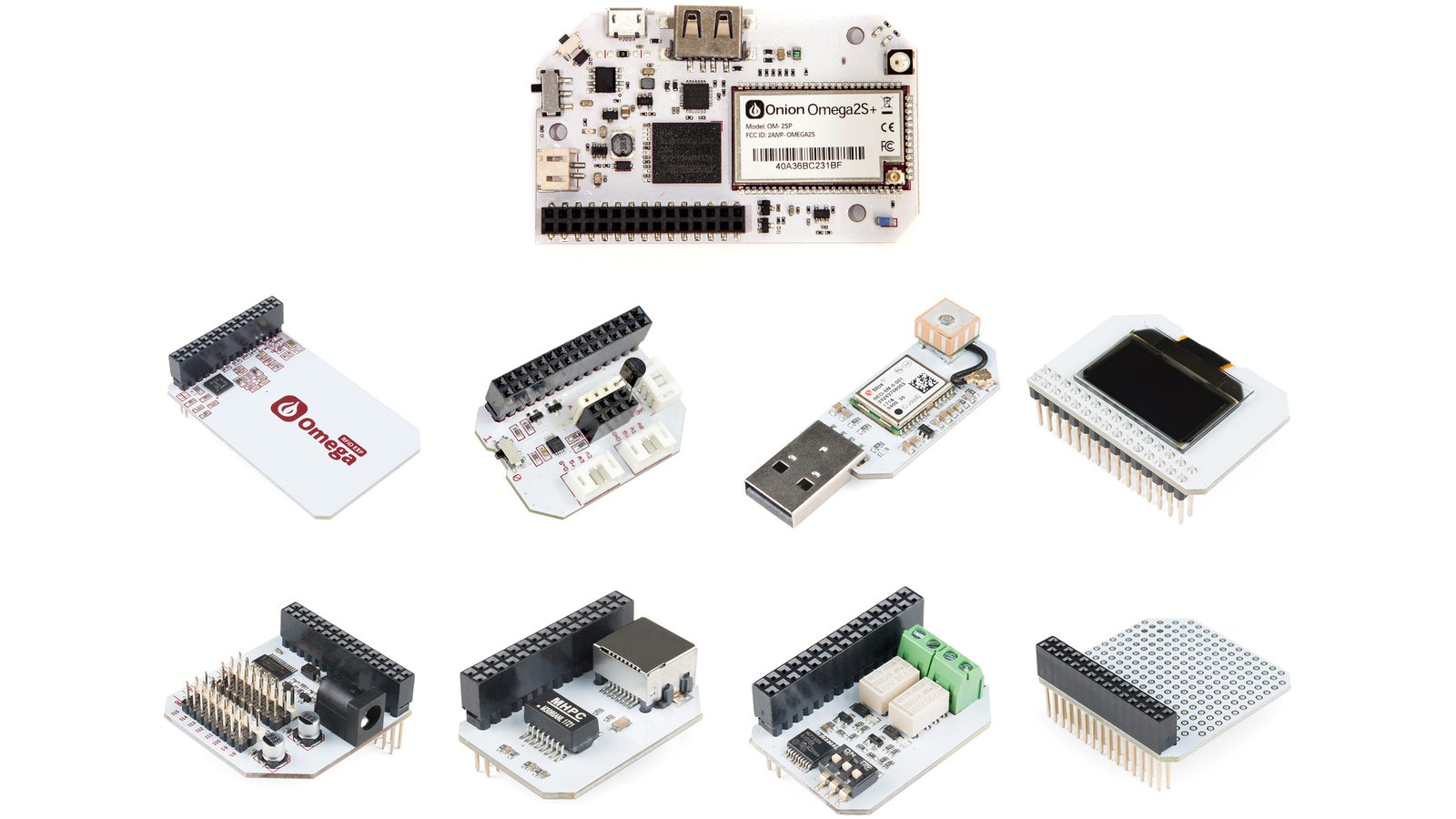
An Omega2 Pro and the whole family of available Expansions: NFC/RFID Expansion, ADC Expansion, GPS Expansion, OLED Expansion, Servo (PWM) Expansion, Relay Expansion, Ethernet Expansion, Proto Expansion
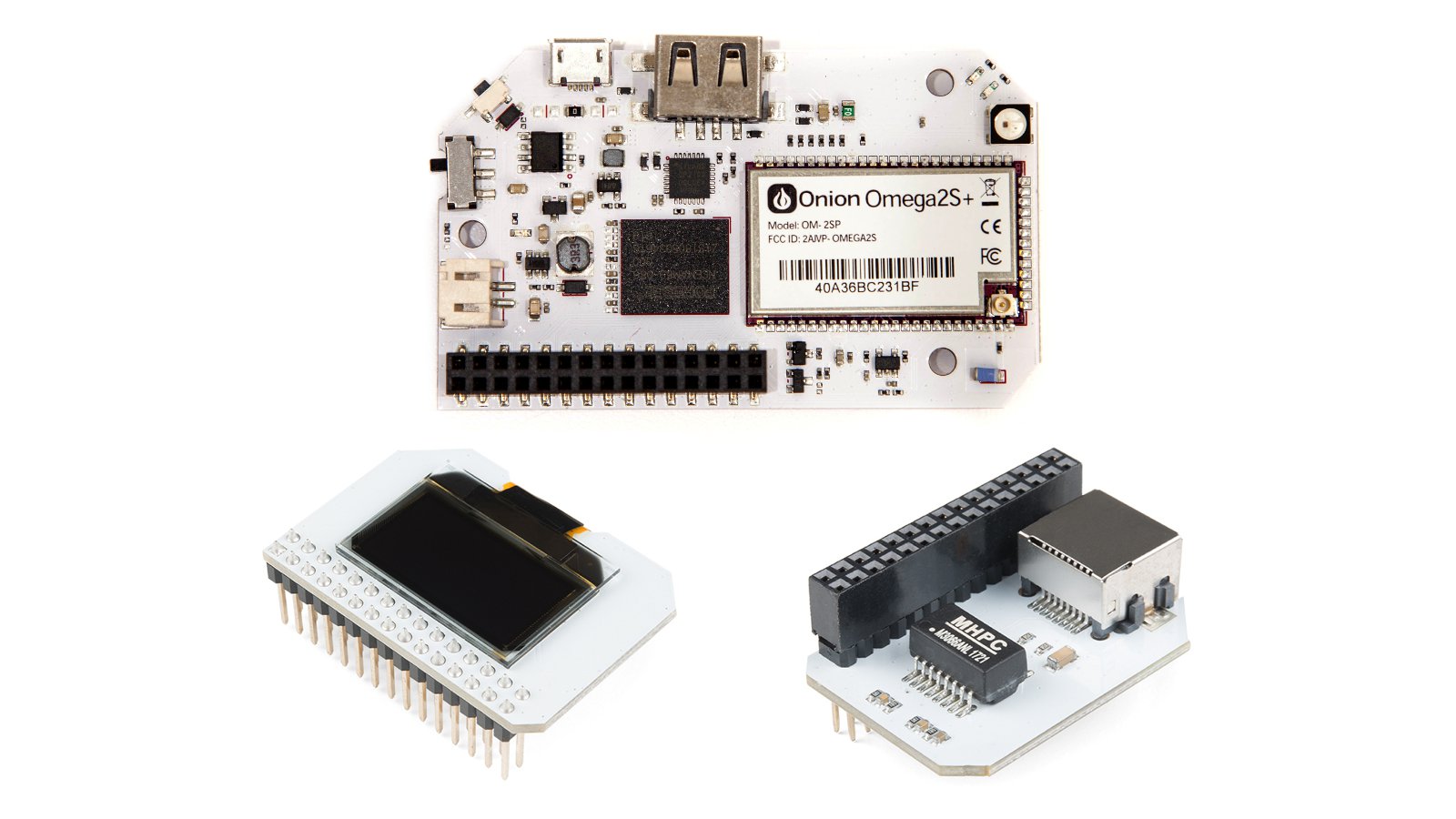
An Omega2 Pro and our essential, most popular OLED and Ethernet Expansions. Build projects with a small physical display, that can use wireless or wired networking.

The Ethernet Expansion adds an Ethernet port to your Omega with a maximum connection speed of 100Mbps. While the Omega is all about wireless connectivity, a reliable wired network connection can be a great addition to a project, and the Ethernet Expansion is a great tool for quickly reflashing your Omega’s firmware.

Omega2 can now read all types of analog voltages and sensors with the help of this ADC Expansion. Read and interpret up to 4 analog voltage or sensor inputs, each with 16 bits of precision.

The OLED Expansion adds a low-power 0.96″ monochrome display to your Omega. With a resolution of 128×64, you can use it to display text, images, and even animations. Very useful for displaying status information, web data, and small logos.

Bring contact-less RFID and NFC communication to your Omega2. It supports reading and writing with several NFC and RFID protocols at 13.56 MHz. Comes bundled with two programmable Mifare Ultralight tags.

The Servo Expansion adds 16 PWM (Pulse Width Modulation) outputs to your Omega. Connect standard servos directly to the Expansion since each channel has its own 3-pin connectors, making it that much easier to get started with your project! This Expansion is great in any application that requires servos, like a robotics project or anything with moving parts. Given that PWM is so useful, you can also use this Expansion to precisely control LEDs or drive a DC motor using an H-bridge. The Servo Expansion is often also called the PWM Expansion.

The Proto Expansion for the Onion Omega allows you to create your very own expansion that interfaces with your Omega. It provides a small soldering area and 30-pin header that plugs into the Expansion Dock. With it you will have full control over what kind of project you design for your Omega.
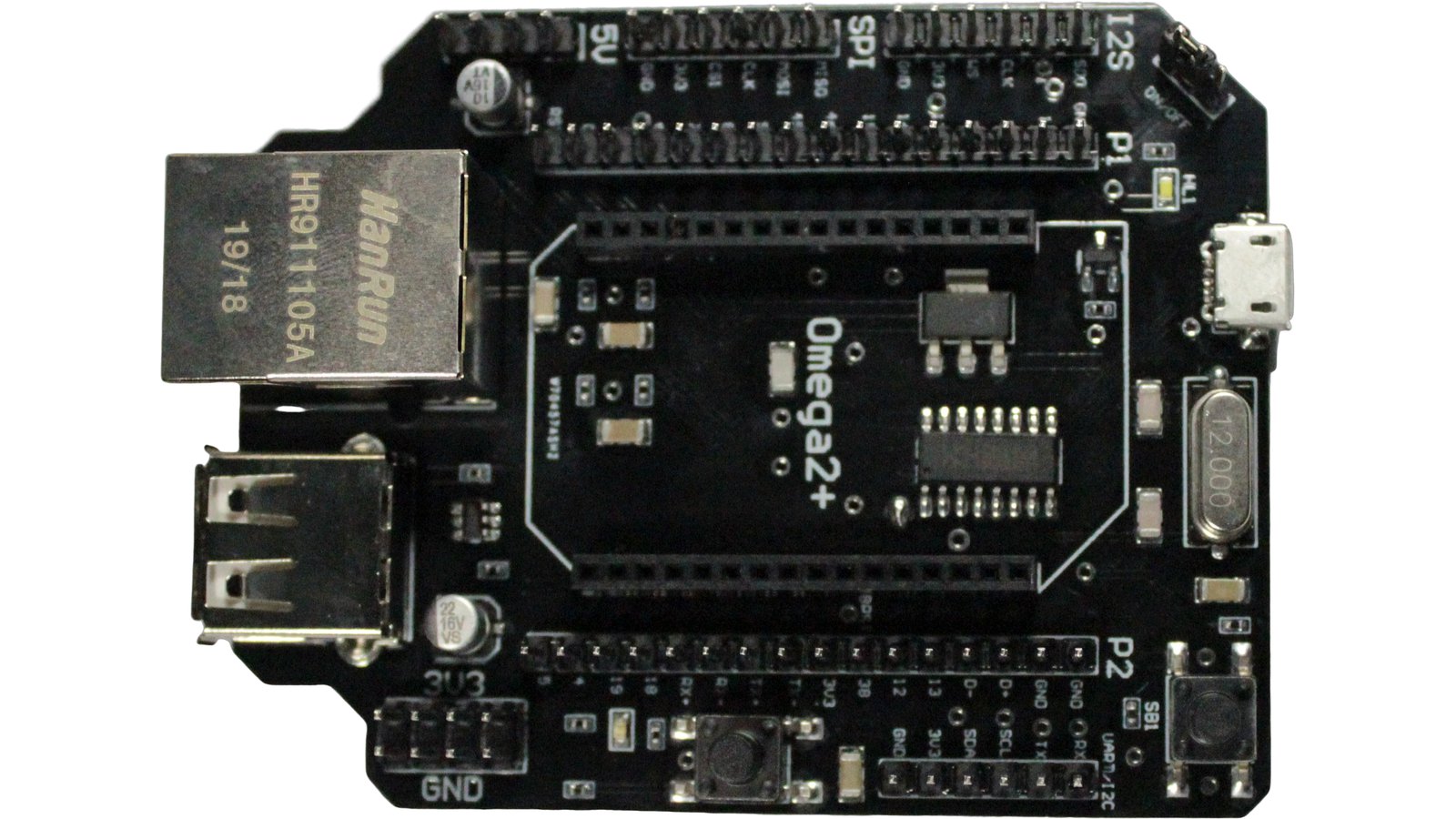
From the Omega2+ Expansion Dock project.
An expansion board that gives the Omega2+ IoT board access to various modules, sensors, and USB devices through SPI, I²S, I²C, UART, USB 2.0, and Ethernet. Also provides a real-time clock with dedicated battery power.

· onion.io · OnionIoT · OnionIoT
Onion is a team of technology enthusiasts, creators, and strivers, looking to make amazing products and even better user experiences. Onion has been in business since 2014, graduating from the TechStars Startup Accelerator in Boston that year. In 2015, we introduced the world to the Onion Omega IoT computer.
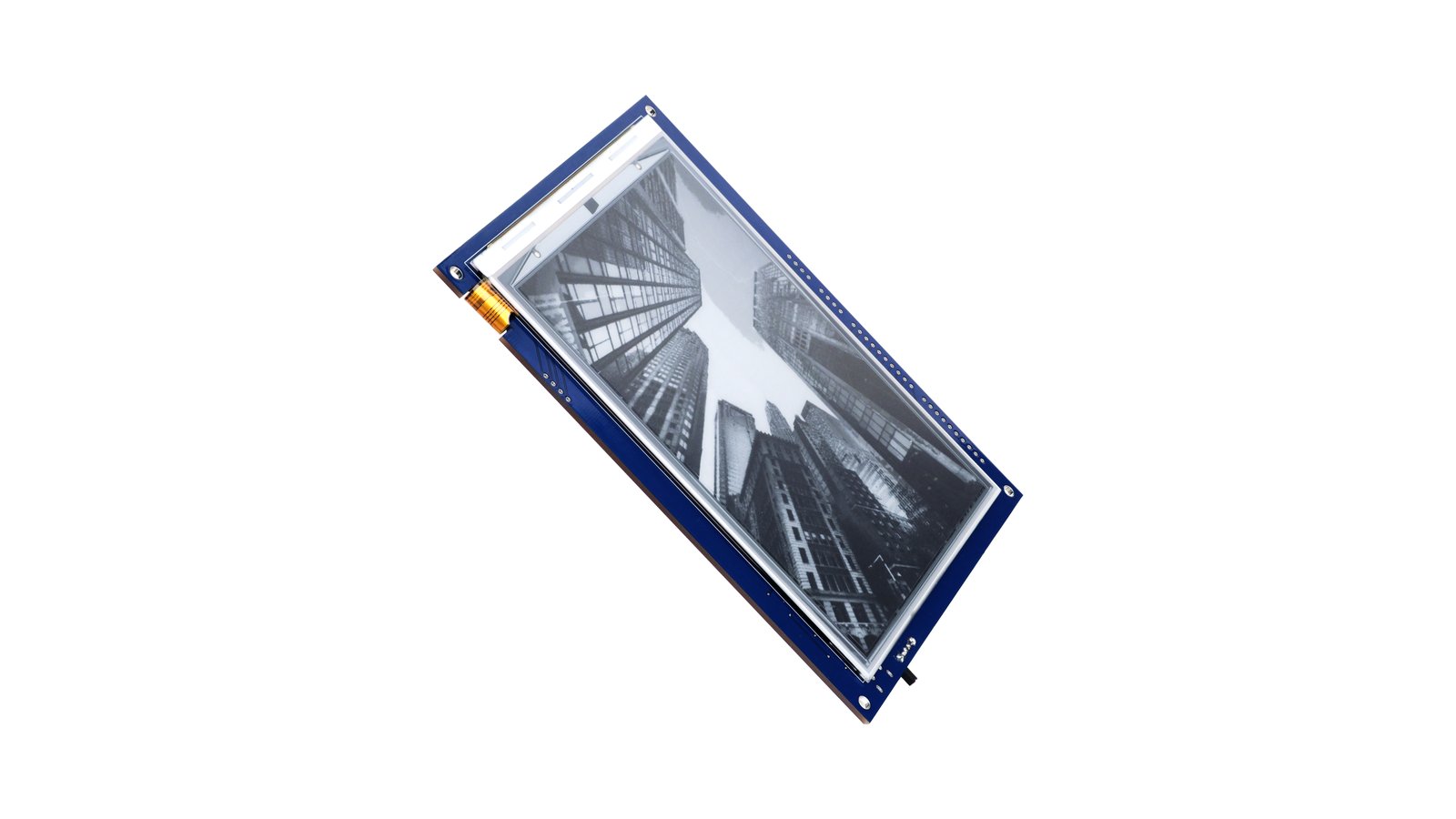
Versatile, easy-to-use, Wi-Fi-enabled e-paper display
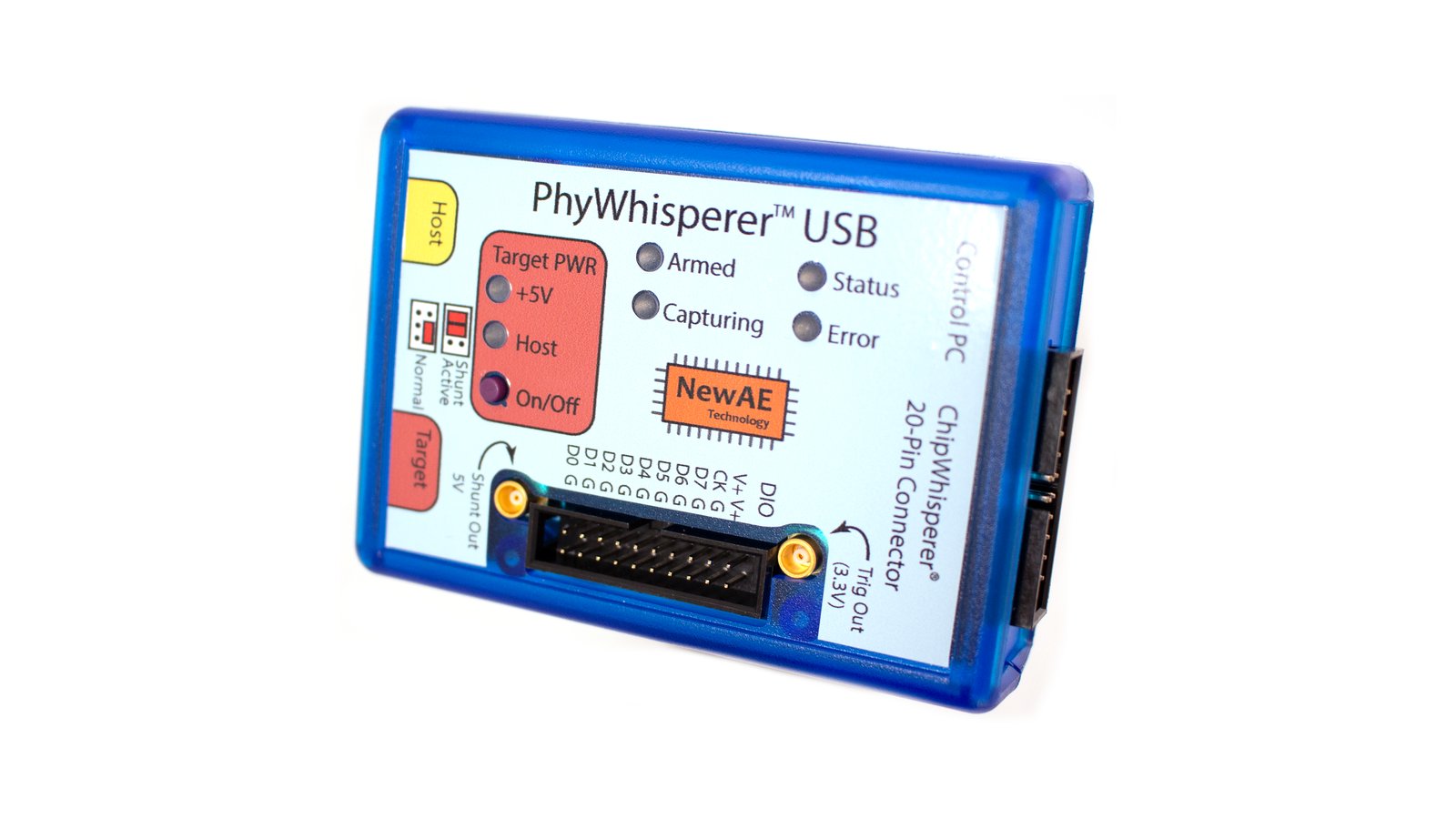
A hardware-based USB 2.0 monitor & trigger platform, controlled from Python
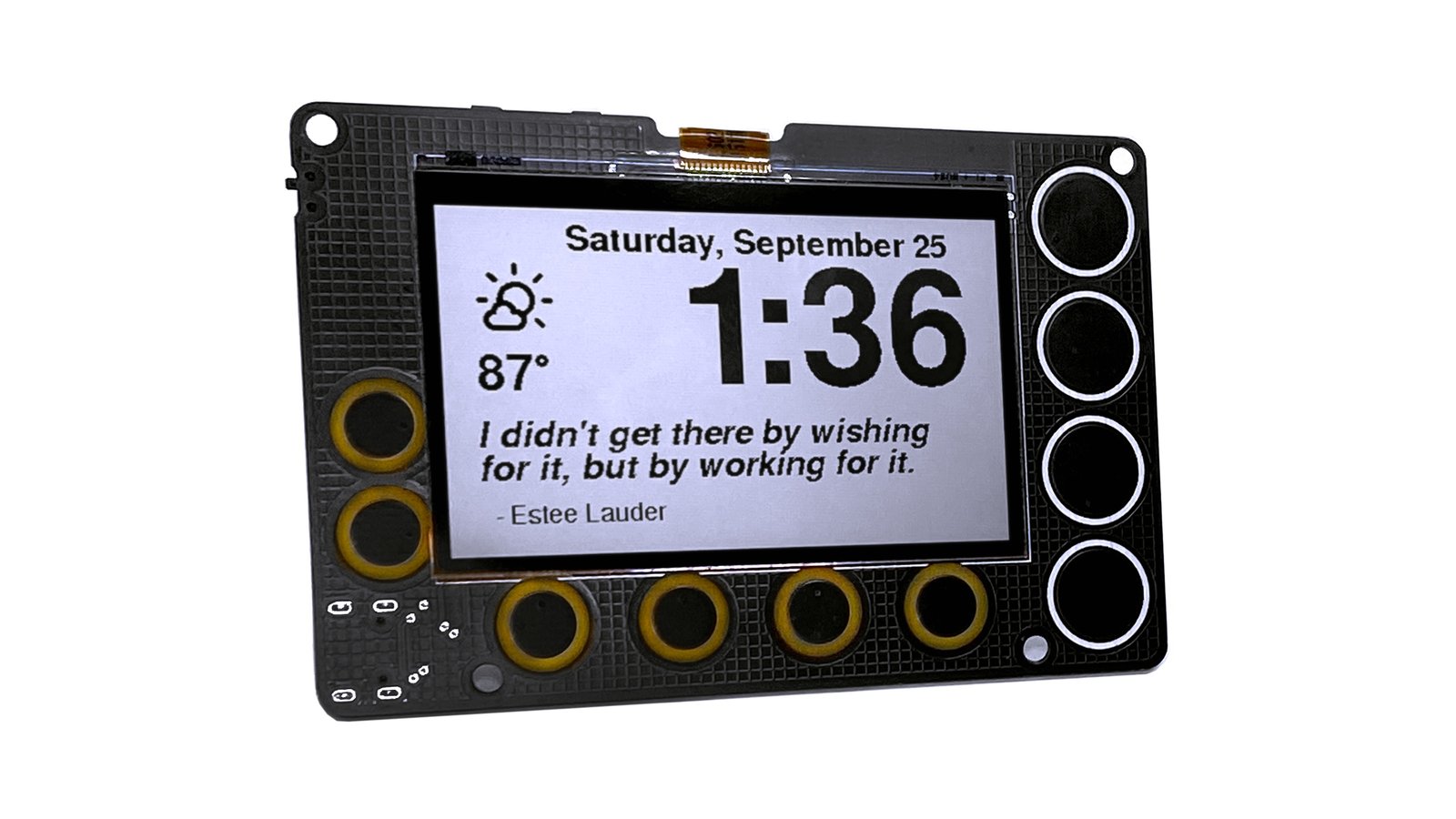
A low-power, open source, 2.7-inch IoT display powered by an ESP32-S2 module and featuring SHARP's Memory-in-Pixel (MiP) screen technology